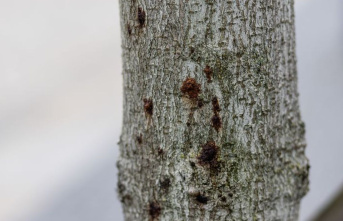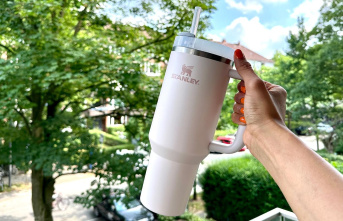Acid isn't always acid, but at its core it's still acid. That's why you have to pay attention to the correct application with an AHA peeling. The product is said to reduce blemishes, smooth the skin and make it glow. But if you use it in too high a dose, you can irritate the skin and damage the natural protective barrier. How do you benefit from an AHA peel? Here are the top tips.
The abbreviation AHA is the English term "alpha hydroxy acid". The last word reveals what an AHA peel is and that is an acid peel. There are now various AHA peels from different brands. It is used on the face to remove dead skin cells. The acid can be naturally occurring or synthetically produced. AHAs are known for use in the cosmetics industry. They are often found in products designed to help with wrinkle reduction. The AHAs most commonly used in cosmetics are similar to those found in food, such as glycolic acid (found in sugar cane), lactic acid (found in sour milk), or citric acid (found in citrus fruits). However, the source of the AHAs in cosmetics is mostly synthetic, meaning it comes from the lab.
The upper 0.1 millimeter thin layer of skin is completely renewed every four weeks and forms a horny layer for protection. Human skin is made up of two main components, the upper epidermis and the underlying dermis. A chemical peel like the AHA peel penetrates deeper into the skin than traditional peels, which use small granules for a more scrubbing effect and only work on the surface. AHAs reduce the cohesion of the corneal cells in the skin so that the dead cells detach more quickly. They also stimulate the formation of glycosaminoglycans and thereby increase the moisture content of the skin.
In general, peelings help the skin to remove dead skin cells and thus promote cell and collagen production. This supports the skin renewal process. A positive effect of peeling can be radiant, smooth skin that regains elasticity and moisture.
If you've never tried a chemical peel before, caution is advised. The skin should slowly get used to an AHA peel. Means: In the beginning, do not use the product more than once a week and observe how your skin reacts. If your skin tolerates the peeling, you can apply it regularly — two to three times a week in the evening — depending on your needs. A slight tingling or feeling of warmth is normal after use. If your skin reacts with redness and pain that does not go away after a short time, you should consult a dermatologist.
Using an exfoliant makes the skin more sensitive in the short term. An AHA chemical peel in particular increases your skin's sensitivity to light. You can use numerous anti-aging products or moisturizers, but if you neglect sun protection, your skin will still age faster. You will get the best result if you apply effective UV protection (at least sun protection factor 30) outside after the peeling. Otherwise you risk redness in the short term and wrinkles, pigment spots or skin cancer in the long term.
Tip: A light sun gel is ideal for everyday use, as it acts as a moisturizer without weighing the skin down or making it greasy.
Product names that sound similar can cause confusion when making a purchasing decision. In addition to AHA peeling, so-called BHAs are also popular. It is also an English abbreviation "beta hydroxy acid" and means beta hydroxy acid. Like AHA, the acid sloughs off dead skin cells from the skin's surface. For example, unlike AHA, which is represented by fruit acid or lactic acid, BHA can be salicylic acid. It has the advantage of being lipophilic. This means that it cleans the pores more thoroughly and is therefore particularly popular with impure skin.
Sources: Deutsche Apotheker Zeitung, Apotheken Umschau
This article contains so-called affiliate links. There is more information here.












